Heart, blood vessels and cholesterol

Cardiogenic Shock: What Are The Causes And Symptoms? + Treatment
Heart attack or heart failure can go into cardiogenic shock. Especially when neglecting early treatment is neglected. However, there are other reasons for its emergence.

Myocardial infarction: Why does it occur, what are the manifestations of an acute heart attack?
Myocardial infarction or even heart muscle infarction is an acute form of ischemic heart disease. Ischemia, or bloodlessness, is caused by a blockage in the coronary artery that leads blood to the heart muscle cells. The main cause is a sudden closure or long-term narrowing of the blood vessel.

Hemorrhoids, Golden Veins: What Are The Symptoms And Their Treatment? (external, internal)
Hemorrhoids or as know also as piles, are a frequent problem of adults with a significant impact on comfort and often even ones' psyche.
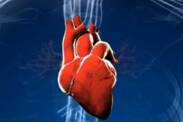
Atrial fibrillation
Atrial fibrillation is the most common heart disorder and is characterized by arrhythmia or heart rhythm disorder . The disease causes chaotic and irregular contractions of muscle fibers and thus loss of coordinated activity of the atria. At the same time, the heart weakens its pumping ability and at the same time, irregular and accelerated heart activity occurs. The disease is most common in people over 80 years of age, where it affects 15% of the population.

Hypertensive crisis: How does it manifest and what its treatment? High pressure- what endangers health?
Hypertensive crisis is a life-threatening condition characterized by a sudden and sharp increase in blood pressure. It is accompanied by the risk of damage and failure of vital organs.

Endocarditis: How is it manifested, infectious, non-infectious or rheumatic? + Other forms and their causes
Endocarditis is a disease of the inner lining of the heart. It is an inflammatory disease that in most cases has an infectious origin. However, not always.

What are varicoses, varicose veins? Why they appear, how they manifest and cure
Varicose veins are the most common disease in developed countries. They are classified as diseases of civilization. They are estimated to affect 10-40% of the world's population. Their incidence also depends on age, with women more frequent.

Aortic dissection: What are the causes of arterial rupture and symptoms? + Risks and treatment
During aortic dissection, the vascular wall ruptures, with blood flowing between its inner layers. The extent may be small, but also extensive and affecting the entire aorta.

Deep vein thrombosis: What is it, why does it occur and what are its complications?
Deep vein thrombosis is a relatively common disease, the difficulties of which can be mild and insignificant. However, the other side of the problem is the risk of developing pulmonary embolism and thromboembolic disease.

Cardiac or pericardial tamponade: Manifestations and Causes
Cardiac tamponade ranks as an emergency condition that requires immediate treatment. It is manifested by failure of the heart to function as a pump, even death.
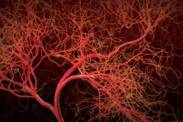
Vasculitis, Causes of Inflamed Blood Vessels, Symptoms
The term vasculitis denotes a broad group of diseases characterized by inflammation to necrosis of the vascular wall. They affect all types of blood vessels and anywhere in the body.

What is Kawasaki disease? What are its causes, symptoms and how is it treated?
Kawasaki disease is an acute febrile illness characterized by inflammation of small and medium-sized blood vessels. In most cases, the disease affects children under the age of 5, especially boys. It is relatively rare in our country. Children from Japan are most often bothered. The disease has several stages and in most cases healing occurs.

What is chronic venous insufficiency, as manifested, has risks
Chronic venous insufficiency is one of the diseases of civilization. This is a modern epidemic. It has a multifactorial basis and is negatively supported by today's lifestyle.

Chronic venous disease, insufficiency: What are its causes and symptoms?
Chronic venous disease is a common problem, the development of which is also supported by a modern lifestyle. It negatively affects the quality of life, it worsens over time.
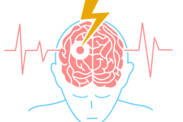
What is a stroke? Do you know its symptoms, risks or treatment?
Stroke is an acute disease of the nervous system that results from a disorder of the blood supply to the brain.

Atherosclerosis: Do you know the symptoms or causes, risks, prevention?
Atherosclerosis is a disease of the arteries. The wall of the artery is affected by a disease process. It takes place over a long period of time and is progressive due to negative conditions.
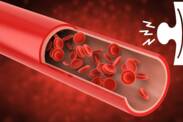
Aneurysm: What is a vascular bulge, how does it manifest and what are its risks?
An aneurysm, also known as vascular edema, is a serious vascular disease. It affects the arteries and aortas. It is divided into right, dissecting, and false. A person can live with an unrecognized aneurysm for many years, however, its rupture immediately threatens a person's life.

What does back pain between the shoulder blades mean? The most common causes
Pain is a symptom that tells us that something unnatural is happening in the body. It alerts us to it. Pain between the shoulder blades is a symptom of various diseases. It can be a problem with the thoracic spine, cardiovascular, respiratory or digestive system.
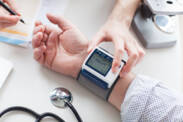
Low blood pressure: What are the symptoms and risks of hypotension? Is 90/60 not enough?
Low blood pressure is a condition where the blood pressure falls below 100/60. Professionally, it is also called hypotension. Its cause is not fully understood. Sometimes it arises as a consequence of another disease.

Green tea: what does it contain and what are its health benefits? Does it help with weight loss?
Green tea is one of the most popular teas and hot drinks worldwide. Its existence has been mentioned for thousands of years. It originates from China and is known for its many health benefits. What does green tea contain and how does it affect human health?









